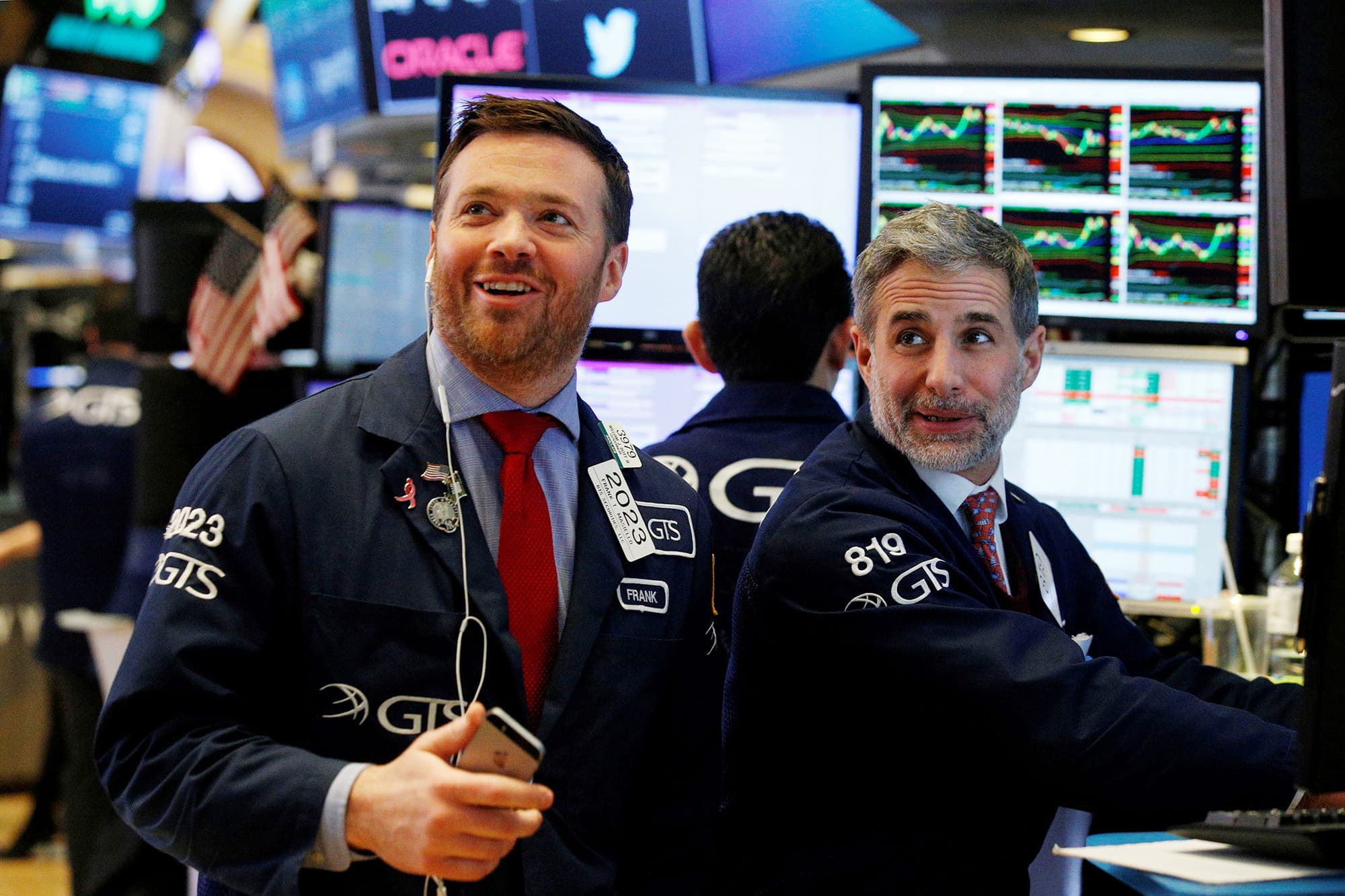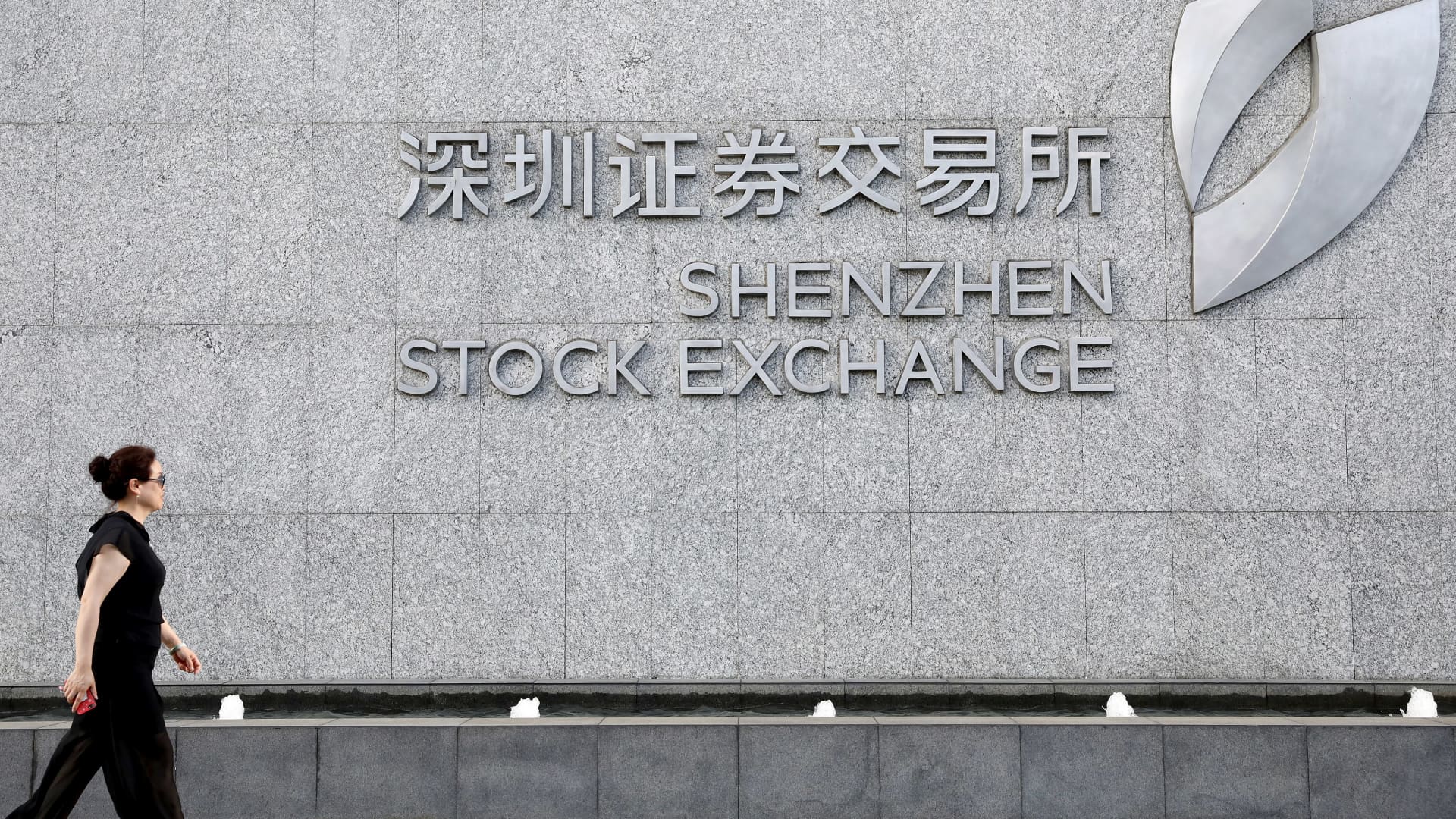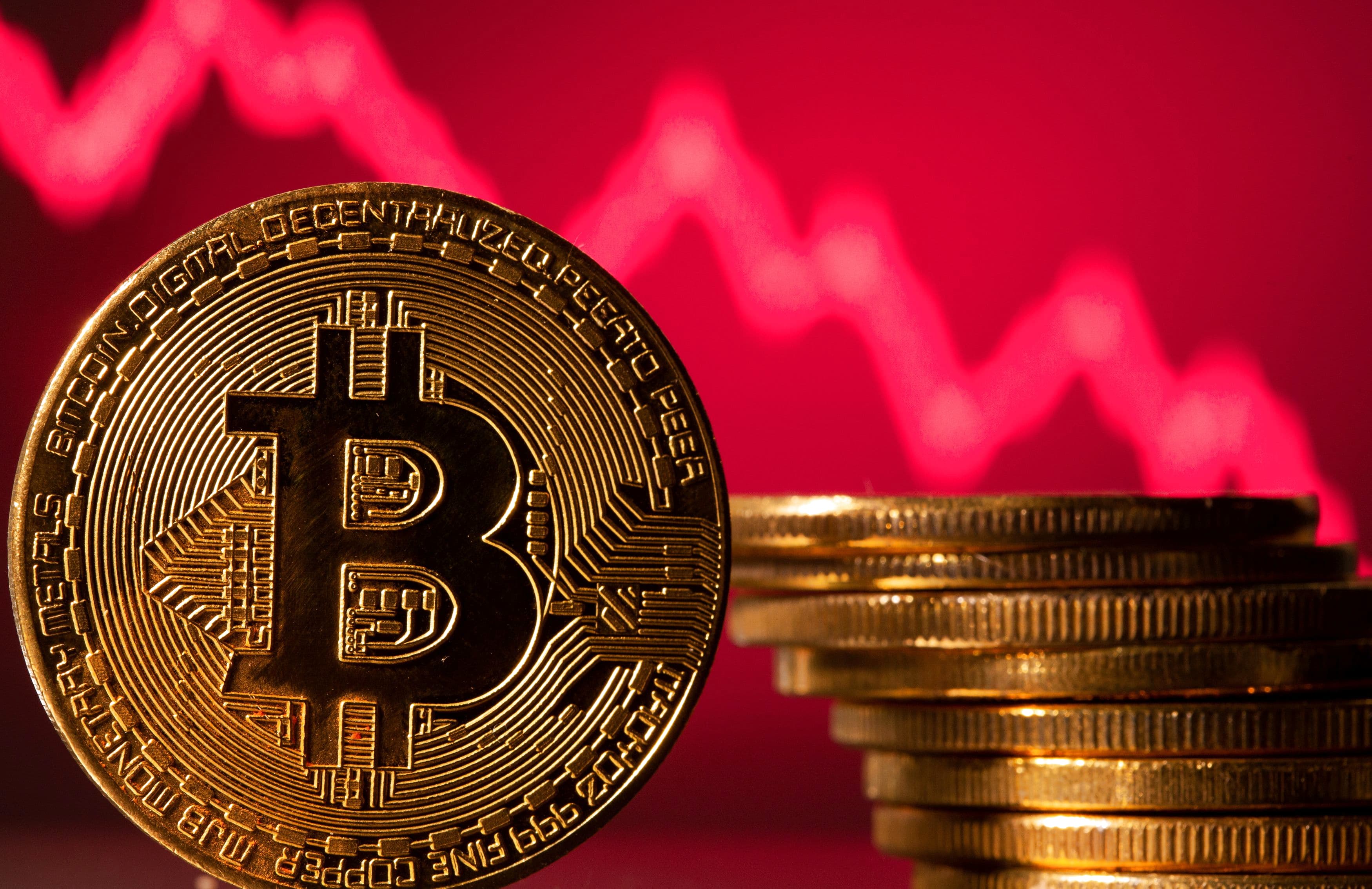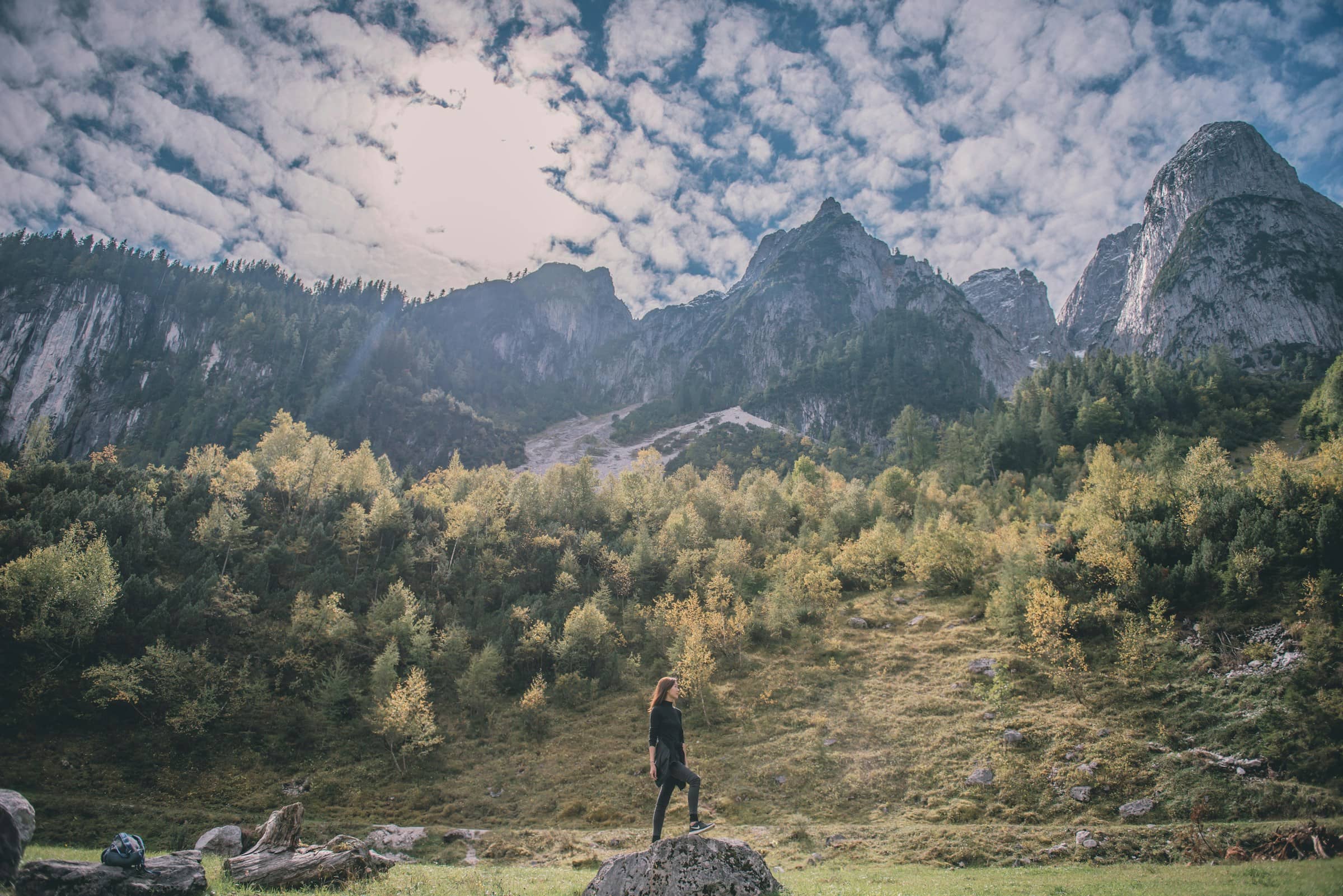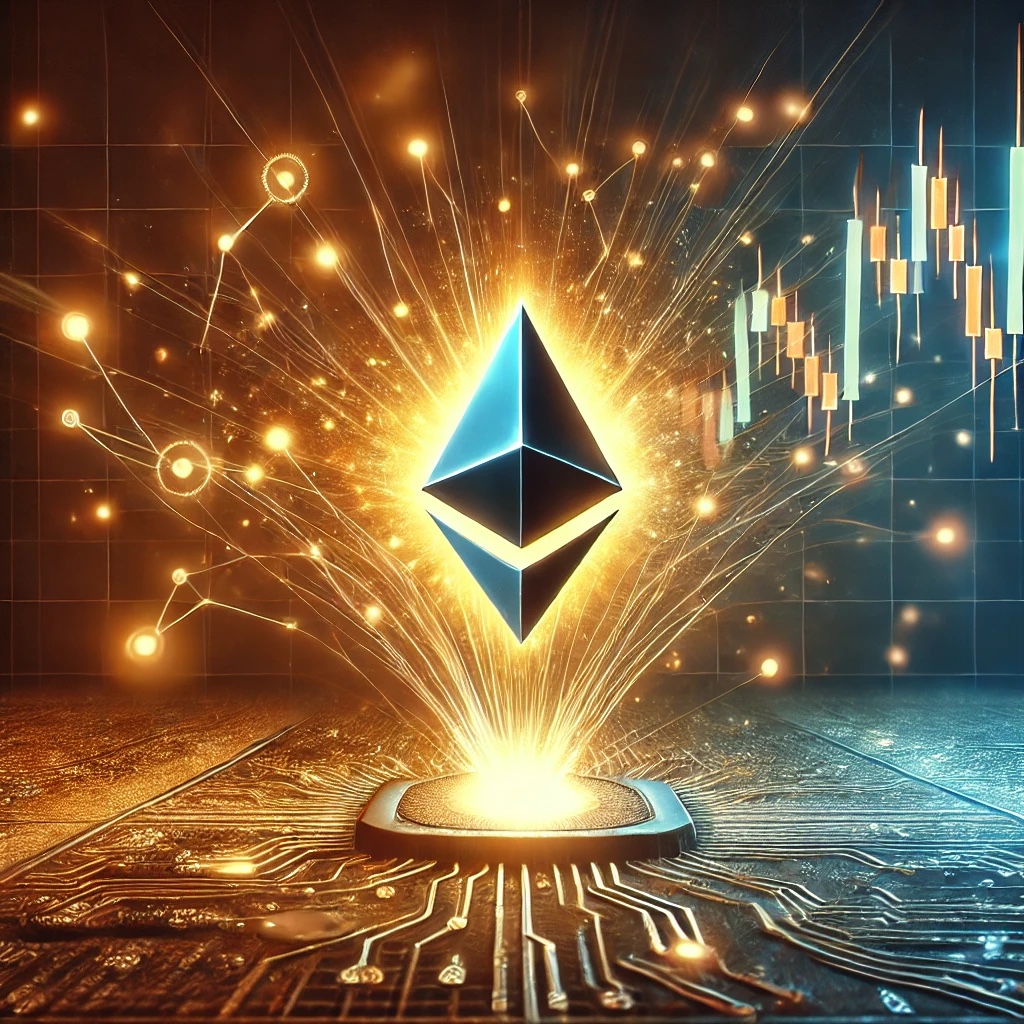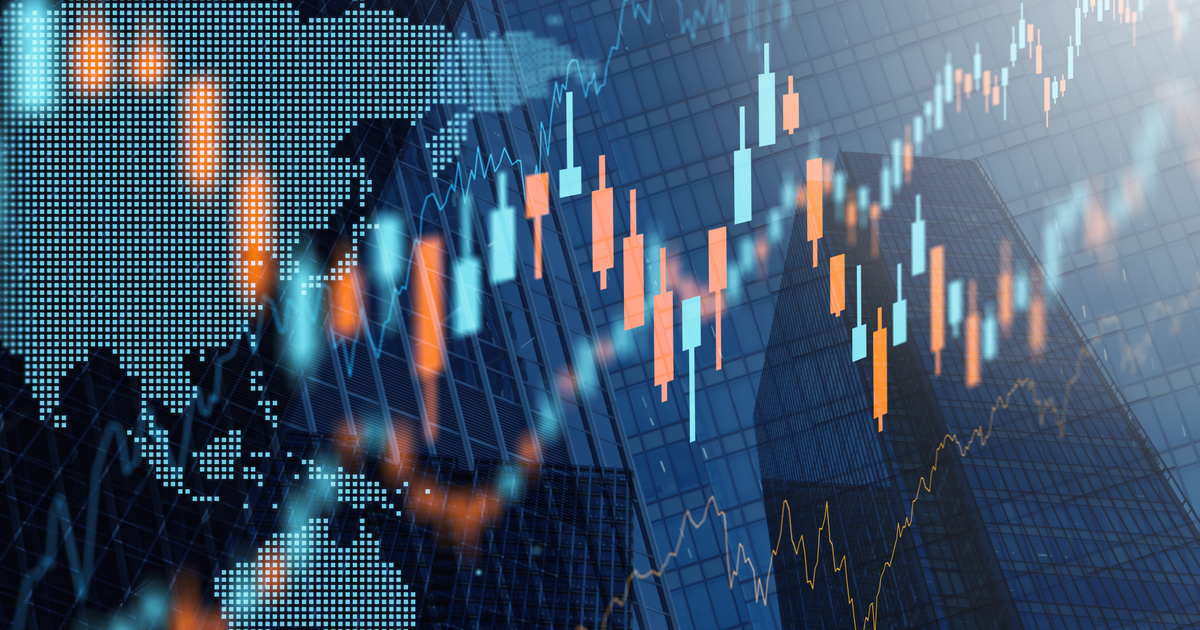No hope for the future: Economic struggles add fuel to Iran's protests
Anti-government uprisings are to remain a sticking point and increase in frequency in Iran's political landscape according to Economist Intelligence Unit.
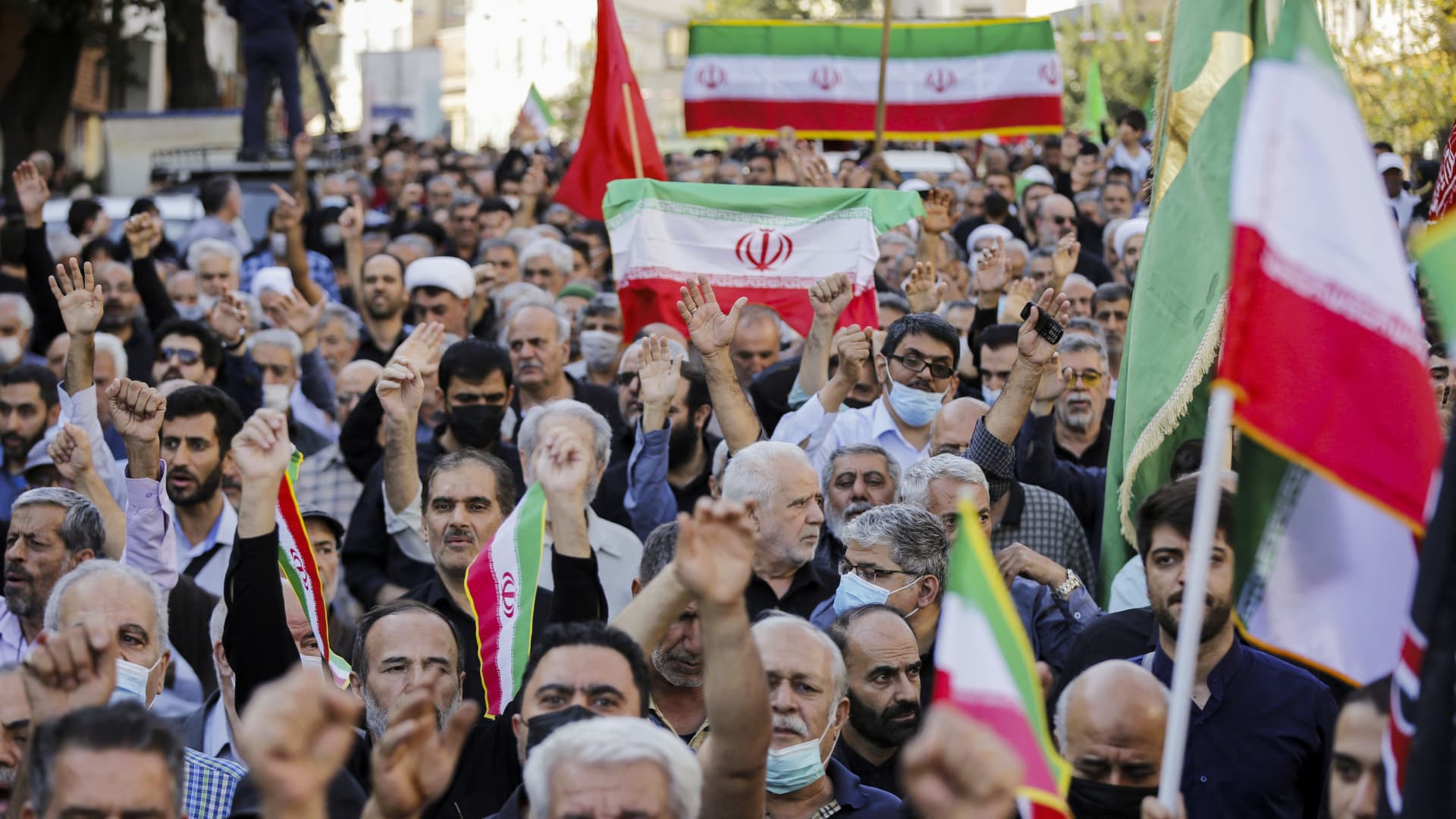
People gather in protest against the death of Mahsa Amini along the streets on September 19, 2022 in Tehran, Iran. Anti-government uprisings are to remain a sticking point and increase in frequency in Iran's political landscape as dissatisfaction with other factors like the country's economic conditions surface, according to analysts.
Getty Images | Getty Images News | Getty Images
More than 180 people have reportedly been killed in Iran's crackdown since protests ripped through the country following the death of a Kurdish Iranian woman — analysts say such protests are expected to intensify.
Protests have spread to more than 50 cities in the one month since the death of 22-year-old Mahsa Amini, who was arrested for allegedly breaking Iran's strict hijab rules. She died while in the custody of morality police.
"Expect anti-government protests to remain a feature of [Iran's] political landscape and to increase in frequency, scale and violence as economic conditions worsen and social restrictions are tightened," said Pat Thaker, Economist Intelligence Unit's editorial director of Middle East and Africa.
These protests will be met with force, and increase the Islamic Republic's dependence on Iran's elite armed forces, the Islamic Revolutionary Guard Corps, she told CNBC.
Iran's supreme leader Ayatollah Khameinei broke his silence last week and called the protests "riots." He also blamed the U.S. and Israel in his first public comments since the unrest.
Grievances of Iran's youth grapple with
Iran has a history of protests sparked by socioeconomic and political issues, such as the 2019 protests over fuel prices, and in 2017 when people took to the street over rising inflation and economic hardship.
"In more recent years, we've seen protests over economic grievances. Those have been driven primarily by the working class and lower middle class," said Suzanne Maloney, deputy director of the Foreign Policy program at the Brookings Institution.
Young Iranians are frustrated by decades of economic mismanagement alongside the impact of international sanctions and they hold the Iranian leadership accountable...
Sanam Vakil
Royal Institute of International Affairs
She said the past periods of unrest have built up into the fierce fervor seen in current protests and could "culminate in something that is going to provide a very persistent and difficult challenge for the Islamic Republic to withstand."
Iran's economic troubles
Inflation in Iran is expected to remain high at over 30%, according to the World Bank.
The economic troubles are compounded by the country's soaring unemployment of about 10% and a government debt of 40%, statistics from the International Monetary Fund show.
The decreasing likelihood of a successful Iran nuclear deal could also mean that various economic sanctions will continue to weigh on the country's economy.
"There is no question that underlying the current tensions are issues that go beyond the forced hijab [situation]," said Djavad Salehi-Isfahani, professor of economics at Virginia Tech.
Iranians take part in a pro-government rally in Tajrish square north of Tehran, on October 5, 2022, condemning recent anti-government protests over the death of Mahsa Amini. Anti-government uprisings are to remain a sticking point and increase in frequency in Iran's political landscape as dissatisfaction with other factors like the country's economic conditions surface, according to analysts.
AFP | Afp | Getty Images
"Young Iranians are frustrated by decades of economic mismanagement alongside the impact of international sanctions and they hold the Iranian leadership accountable for both issues," said Sanam Vakil, deputy director and senior research fellow at the Royal Institute of International Affairs.
"There is no economic justice or prospect of hope for the future, and this is driving widespread anger that is violently spilling over on the streets," Vakil said.
What makes these economic conditions more difficult to bear for young people is that they are "better educated" than their older counterparts who are the ones who make the rules and run the country, according to Salehi-Isfahani.
This is very much a turning point for the Islamic Republic. The social movement we see underway today has the capacity to grow and continue.
Maloney
economics professor, Virginia Technology
"[The] average years of schooling for people under 40 is 11 years, compared to 6 for older Iranians. But education has not helped youth get a more favorable treatment in the labor market," he said in an email.
Iran's adult literacy rate stands at 86.9% in 2022, compared to 65% in 1991, two years after Khamenei took power. Iran's youth unemployment rate hovers slightly above 27% in 2021.
'Regime with staying power'
The social movement that's underway has the capacity to develop and persist even in the face of repression attempts, but it's not likely to escalate into a civil war, Maloney said.
"This is very much a turning point for the Islamic Republic. The social movement we see underway today has the capacity to grow and continue," she said.
A group of students burned some veils as a form of protest. Protest in front of the embassy of Iran organized by Iranian students living in Rome to protest against violence of Iranian regime and against death of Mahsa Amini. What makes these economic conditions more "difficult to bear" for the young is that they are "better educated" than their older counterparts who are the ones who make the rules and run the country, according to a professor at Virginia Tech.
Matteo NardonePacific Press | Lightrocket | Getty Images
Despite Iranians exhibiting more willingness to be more confrontational with security forces than before, however, Maloney expressed hesitancy at the prospect of regime change.
"This is a theocracy, it has a monopoly over the levers of power. And it has survived significant unrest throughout the course of the past 43 years," Maloney said, citing the invasion by late Iraq president Saddam Hussein in 1980, and the latest Covid-19 challenges.
"So this is a regime with some staying power."

 Koichiko
Koichiko 







